Description
The instruction for medical use
of Talliton® medicine
the Trade name
of Talliton®
the International unlicensed
name Karvedilol Lekarstvennaya a form
of the Tablet, 6.25 mg, 12.5 mg, 25 mg
Structure
One tablet contains
active agent – karvedilol 6.25 mg, 12.5 mg, 25 mg,
excipients: lactoses monohydrate, krospovidon, sucrose, silicon dioxide colloidal anhydrous, K-25 povidone, magnesium stearate.
Tablets of 6.25 mg contain ariavit quinolinic yellow (E104).
Tablets of 12.5 mg contain ariavit yellow Sunset (E110).
Description
of the Tablet of 6.25 mg: pale yellow round, flat, with a facet, with risky on one party and an engraving of the stylized letter E and number 341 on another, without or almost flavourless.
Tablets of 12.5 mg: pale orange (impregnations of more dark color are possible) round, flat, with a facet, with risky on one party and an engraving of the stylized letter E and number 342 – on another, without or almost flavourless.
Tablets of 25 mg: white or almost white, round, flat, with a facet, with risky on one party and an engraving of the stylized letter E and number 343 – on another, without or almost flavourless.
Pharmacotherapeutic
Alpha group and beta blockers.
The code of automatic telephone exchange C07AG02
the Pharmacological
Pharmacokinetics Later properties of intake karvedilol is quickly soaked up from digestive tract. Is exposed to metabolism at the first passing through a liver, the bioavailability is about 25%. The peak of concentration in blood plasma is reached approximately in 1 hour after intake. The pharmacokinetics of a karvedilol is linear, that is its concentration in blood plasma is proportional to the entered dose. The accompanying meal does not affect bioavailability of a karvedilol and its maximum concentration in blood plasma, but can increase time of achievement of the maximum concentration in blood. Karvedilol has high lipophilicity, linking with proteins of blood plasma – 98-99%. The seeming volume of distribution is 2 l/kg.
After intake the metabolism of the first passing through a liver is 60-75%. Karvedilol will be transformed to metabolites which are generally removed with bile. Karvedilol is metabolized mainly in a liver, generally by conjugation with a glucuronide. Demethylation and hydroxylation of a phenylic ring leads to formation of three active metabolites with b-adrenoceptor blocking activity. the 4-hydroxyphenolic metabolite as b-adrenoblocker, is 13 times more active than a karvedilol. Three active metabolites have weaker vazodilatiruyushchy properties, than karvedilol. Two of hydroxycarbacindery metabolites of a karvedilol are extremely powerful antioxidants, and their activity in this regard at 30-80 times exceeds that a karvedilol. Concentration of these three active metabolites in blood serum were 10 times lower, than concentration of a karvedilol. Average elimination half-life of a karvedilol about 6 hours, clearance from blood plasma – 500-700 ml/min. Removal happens, mainly, to a stake, the main way of elimination – through bile. An insignificant part is allocated through kidneys in the form of metabolites.
At patients with arterial hypertension the pharmacokinetics of a karvedilol does not depend on age.
At long reception of a karvedilol the renal blood circulation remains and glomerular filtration rate does not change. AUC in blood plasma, elimination half-life and Cmax significantly did not change at patients with arterial hypertension and a renal failure. At patients with a renal failure the removal of a karvedilol kidneys decreases, however changes of pharmacokinetic parameters at the same time insignificant. Talliton is effective drug for treatment of patients with arterial hypertension of renal genesis, with chronic kidney disease and also at the patients who are on a hemodialysis or transferred transplantation of a kidney. Drug is not removed from an organism at dialysis.At patients on a hemodialysis karvedilol is more effective and it is better transferred, than blockers of slow calcium channels.
In a heavy abnormal liver function the bioavailability of a karvedilol considerably (up to 80%) increases in connection with weakening of metabolism of the first passing. In cirrhosis the bioavailability of a karvedilol is 4 times higher, and the maximum concentration in blood plasma – is 5 times higher, than normal.
In arterial hypertension at patients with diabetes of type 2 karvedilol does not influence glucose level in blood on an empty stomach and after meal, on the level of glikozilirovanny hemoglobin (Hb A1) and also on a dose of glucose-lowering drugs. karvedilol does not cause reliable changes of indicators of glucose tolerance test in patients with diabetes of type 2. At the patients with arterial hypertension without diabetes having insulin resistance (metabolic syndrome) karvedilol improves sensitivity to insulin. Similar results are noted at patients with arterial hypertension and diabetes of type 2.
A pharmacodynamics
Karvedilol – drug of the third generation, the multipurpose blocker having the a1st, b1st, b2-adrenoceptor blocking properties. Karvedilol – the powerful antioxidant deleting free oxygen radicals and suppressing proliferation of smooth muscle cells in walls of vessels. Blocking b-adrenoceptors, karvedilol system renin-angiotensin-aldosteronovoy reduces activity, reducing renin release therefore the liquid delay in an organism at its use is a rare phenomenon. Karvedilol has no internal sympathomimetic activity, however, like propranolol, renders membrane stabilizing effect. Selectively blocking a1-adrenoceptors, karvedilol reduces the general peripheric vascular resistance. Karvedilol does not affect hypertensive effect of angiotensin II. Karvedilol does not influence a lipidic profile. Against the background of treatment karvediloly the ratio of lipoproteins of the high and low density (LPVP/LPNP) does not change. Active Tallitona substance is mix of racemates of two enantiomer of a karvedilol. Its R (+) and S (-) enantiomer have the identical a1-blocking and antioxidant properties. Karvedilol not selectively suppresses b1 and b2-receptors that is property of its S (-) of an enantiomer. Karvedilol reduces an oxidizing stress.
The set of vasodilating and b-adrenoceptor blocking properties of a karvedilol is shown by the following clinical effects:
In arterial hypertension the use of a karvedilol reduces arterial blood pressure by a combination of blockade of b-adrenoceptors and the vasodilatation connected with blockade of a1-adrenoceptors. Its antihypertensive effect is not connected with increase in the general peripheric resistance, as in case of use of other b-adrenoblockers. Karvedilol reduces heart rate a little. The renal blood stream and function of kidneys at patients with stenocardia do not change. Karvedilol does not influence stroke output and reduces the general peripheric vascular resistance. It does not worsen perfusion of bodies and a peripheral blood stream, including skeletal muscles, forearms, the lower extremities, integuments, a brain, arteries of kidneys and a carotid. The feeling of a cold snap of extremities and increased fatigue at physical activity – frequent manifestation of effect of b-adrenoblockers without vasodilating activity – is seldom observed at use of a karvedilol.
The antihypertensive effect develops quickly – in 2-3 hours after single introduction and remains for a long time. At long treatment the maximum effect is noted in 3-4 weeks.
In coronary heart disease karvedilol has antiischemic and antianginous effect which can be traced at long treatment. Karvedilol considerably reduces the need of a myocardium for oxygen and hyperactivity of sympathetic nervous system. Karvedilol reduced preloading of ventricles (pulmonary pressure, pressure of jamming of pulmonary capillaries) and also an afterload (general peripheric resistance).
In chronic heart failure karvedilol considerably reduces the general mortality and the need for hospitalization of patients with cardiovascular disturbances. Karvedilol increases survival of patients with heavy chronic heart failure and well is had by them. Karvedilol increases fraction of emission and weakens symptoms of chronic heart failure of ischemic or not ischemic origin. Effects of a karvedilol are dose-dependent.
Indications
– arterial hypertension (in the form of monotherapy or in a combination with other
antihypertensive drugs)
– chronic stable stenocardia (for long-term treatment)
– chronic heart failure (HSN II-IV a class on NYHA *)
as a part of complex therapy
* NYHA (New York Heart Association)
the Route of administration and doses
Drug is used strictly on doctor’s orders!
A pill should be taken entirely, washing down with enough water.
Talliton it is necessary to accept it is long.
Arterial hypertension: the recommended initial dose – 12.5 mg once a day during the first 2 days. If this dose is well transferred by the patient, it can be raised. Maintenance dose: 25 mg once a day. This dose is sufficient for most of patients. At insufficient effect, but not earlier than the 14th day of treatment, the dose can be increased to maximum – 50 mg once a day (or 25 mg two times a day).
Chronic stable stenocardia: the recommended initial dose – 12.5 mg two times a day during the first two days. A maintenance dose – on 25 mg two times a day. At insufficient effect, not earlier than the 14th day of treatment, the dose can be increased to maximum – 50 mg two times a day.
Chronic heart failure (NYHA II-IV):
The dose should be selected individually. In an initiation of treatment and during increase in a dose it is necessary to carry out careful monitoring. Selection of a dose of the drug Talliton is possible only in a stable clinical condition of the patient. The dose and prescribing of other medicines (such as digoxin, diuretics and APF inhibitors) have to be recorded before Talliton’s appointment. To patients with chronic heart failure for the purpose of prevention of orthostatic hypotension recommend to take the drug at meal time. The recommended initial dose – 3.125 mg two times a day within 14 days (or 1/2 tablets of 6.25 mg in the morning and in the evening). At good tolerance and clinical need the dose is increased with intervals by not less than two weeks up to 6.25 mg two times a day, then to 12.5 mg two times a day, then up to 25 mg two times a day. The dose should be raised to the maximum level transferred by the patient.
The maximum recommended dose:
– 25 mg two times a day for all patients with heavy chronic heart failure and for patients with easy and moderate degree of chronic heart failure with body weight less than 85 kg.
– 50 mg two times a day for patients with slight and moderate chronic heart failure and with a body weight more than 85 kg.
In an initiation of treatment and before each increase in a dose the condition of patients should be controlled as deterioration in a course of heart failure is possible. Development of a delay of liquid, and in connection with vasodilating action – arterial hypotension and slackness is possible. In heart failure and a delay of liquid it is necessary to increase a dose of diuretics, besides, the temporary dose decline of Talliton can be required. In certain cases treatment by Talliton should be suspended temporarily. If sharp vasodilatation (arterial hypotension, warm extremities) is noted, at first it is recommended to lower a dose of diuretics. At preservation of above-mentioned symptoms and if patients receive APF inhibitors, then the dose of the last also should be reduced. If in this case there is no improvement, then it is possible to lower Talliton’s dose. In the cases stated above Talliton’s dose should not be increased until deterioration in heart failure stops or its symptoms do not disappear and also the symptoms connected with vasodilatation will not decrease. In need of a break in treatment more than for 2 weeks, a repeated course it is necessary to begin with the minimum recommended dose (on 3.125 mg two times a day) according to earlier provided scheme.
Drug withdrawal, especially in chronic stenocardia, it is necessary to carry out gradually reducing a dose.
Elderly patients
– arterial hypertension: an initial dose – 12.5 mg (or on 6.25 mg two times a day). Prolonged use of this dose allows to control arterial blood pressure at some patients. If necessary the dose can be increased at an interval of 2 weeks to the maximum dose – 50 mg (or 25 mg two times a day).
– chronic stable stenocardia: the maximum daily dose – 50 mg for two receptions.
– chronic heart failure (NYHA II-IV): appoint the usual doses recommended for adults.
Patients with a renal failure
appoint Drug in the usual recommended doses, considering ability of a karvedilol, to be allocated mainly through digestive tract. At patients with a renal failure of varying severity the pharmacokinetics of a karvedilol does not depend on function of kidneys therefore there is no need for selection of a dose.
Patients with an associated disease of a liver
In a moderate abnormal liver function there can be a need for a drug dose decline.
Side effects
the Side effects observed at patients with chronic heart failure
Very often (> 1/10)
– an asthenia (including fatigue)
– dizziness and a headache (are usually mild and
are more often observed in an initiation of treatment)
Often (> 1/100,
– increase in body weight
– a hypercholesterolemia
– a hyperglycemia, a hypoglycemia at patients with already available
diabetes, a decompensation of carbohydrate metabolism
– bradycardia, orthostatic hypotension, arterial hypotension, hypostases (
including the generalized, peripheral, depending on situation bodies,
hypostases of the lower extremities, crotch hypostases, a hypervolemia,
a liquid delay)
– nausea, vomiting, diarrhea
– a disorder of vision
Infrequently (> 1/1000,
– faints and preunconscious states, atrioventricular block and
heart failure during increase in a dose
Seldom (> 1/10000, <>
– thrombocytopenia
– an acute renal failure and renal failures at patients with
diffusion defeat of vessels and/or a renal failure
It is very rare (
-a leukopenia
the Side effects observed at patients with arterial hypertension and stenocardia
Often (> 1/100
– the fatigue, dizziness and a headache which
are usually mild and are more often observed in an initiation of treatment
– reduction of products of plaintive liquid
– bradycardia, orthostatic hypotension, especially in an initiation of treatment
– bronchial asthma and an asthma at predisposed patients
– dispeptic disorders (nausea, an abdominal pain, diarrhea)
– extremity pains
Infrequently (> 1/1000,
– paresthesias
– suppressed mood, a sleep disorder, an asthenia
– a disorder of vision
– faints, hypotension, atrioventricular block, stenocardia (
thorax pains), symptoms of heart failure, peripheral
hypostases
– disturbances of peripheric circulation (cold snap of extremities,
the alternating lameness or Reynaud’s syndrome)
– vomiting, a constipation
– the perspiration, an allergic dieback, dermatitis, urticaria, an itching, reactions
similar with flat it is deprived emergence or exacerbation of psoriasis
– decrease in potency
Is rare (> 1/10000, <>
– irritation of eyes
– dryness in a mouth
– congestion of a nose, goose breathing and grippopodobny symptoms
– disturbance of urination
is Very rare (
-allergic reactions
– increase in activity of transaminases of blood serum
– thrombocytopenia, a leukopenia.
As well as in case of use of other b-adrenoblockers, the current diabetes can be shown latentno or amplify its symptomatology and decrease the regulating action of antidiabetic means.
Except for drowsiness, a disorder of vision and bradycardia, not one of the listed above side effects does not depend on a dose.
Contraindications
– hypersensitivity to drug components
– disturbances of conductivity (syndrome of weakness of a sinus node, sinuatrial blockade, atrioventricular block of the 2nd and 3rd degree), except for patients with an artificial pacemaker
– the profound bradycardia (heart rate less than 50 beats per minute)
– the profound arterial hypotension (systolic arterial blood pressure
is lower than 85 mm Hg)
– cardiogenic shock
– a metabolic acidosis
– a pheochromocytoma (except for the state stabilized
by prescribing of a-adrenoblockers)
– the unstable dekompensirovanny heart failure (demanding
intravenous administration of means with positive inotropic action and/or
diuretics)
– pulmonary hypertensia, a pulmonary heart
– the profound abnormal liver function
– a bronchospasm or bronchial asthma in the anamnesis
– an obstructive pulmonary disease
– simultaneous intravenous administration of verapamil, diltiazem or other antiarrhythmic means (especially the I class)
– the accompanying use of inhibitors of a monoaminooxidase (
except for MAO inhibitors of V type)
– pregnancy and the period of a lactation
– children’s and teenage age up to 18 years (in connection with insufficiency
of data on its safety and efficiency)
Medicinal interactions
At simultaneous use of Talliton with the drugs exhausting stocks of catecholamines (reserpine, MAO inhibitors) is noted heavy bradycardia and arterial hypotension. In this regard the condition of patients, has to be under careful observation.
Simultaneous introduction of Talliton with blockers of calcium channels (verapamil, diltiazem) and antiarrhytmic means (especially the I class) can increase risk of disturbance of atrioventricular conductivity, development of arterial hypotension and/or bradycardia, asystolia. Intravenous administration of such combinations is contraindicated.
At simultaneous use of Talliton with a- and b-adrenomimetikami development of the arterial hypertension expressed to reflex bradycardia and an asystolia and also reduction of b-adrenoceptor blocking action of a karvedilol is possible.
The clonidine at co-administration with b-blockers can exponentiate an antihypertensive and urezhayushchy warm rhythm effects. At simultaneous use the cancellation has to be gradual, since a karvedilol, then in several days the reception of a clonidine can be gradually stopped.
At a concomitant use of Talliton with digoxin the concentration of digoxin increases approximately by 15%. At the beginning of therapy, at selection of its dose or drug withdrawal Talliton is recommended regular control of concentration of digoxin in blood plasma.
b-adrenoblockers can enhance hypoglycemic effect of insulin or oral antidiabetic drugs. Easing or masking of symptoms of a hypoglycemia is possible (especially tachycardias). Therefore regular control of glucose of blood at the patients taking insulin or the oral antidiabetic drugs is recommended.
At simultaneous use of Talliton with nitrates and antihypertensives (a clonidine, guanetidin, alpha Methyldopum, guanfatsin) strengthening of hypotensive action and decrease in heart rate is noted (observation of a condition of the patient is necessary).
At simultaneous use of Talliton with anesthetics strengthening of inotropic and hypotensive action is noted.
At simultaneous use of Talliton with the means influencing the central nervous system (hypnotic drugs, tranquilizers, tricyclic and tetracyclic antidepressants, ethanol) mutual strengthening of effects is noted (except for the barbiturates weakening action of a karvedilol due to induction of enzymes).
At simultaneous use of Talliton with non-steroidal anti-inflammatory drugs, estrogen the reduction of hypotensive action owing to decrease in products of prostaglandins is noted.
At simultaneous use of Talliton with ergotamine it is necessary to consider vasoconstrictive effect of the last.
At simultaneous use of Talliton with xanthine derivatives (Aminophyllinums, theophylline) the reduction of b-adrenoceptor blocking action is noted.
At simultaneous use of Talliton with kurarepodobny muscle relaxants – strengthening of neuromuscular blockade.
As karvedilol is exposed to oxidizing metabolism, its pharmacokinetics can change at induction or oppression of isoenzymes of a system of P450 cytochrome.
At simultaneous use of Talliton with rifampicin the decrease in concentration of Talliton in blood serum for 70% is noted.
At simultaneous use Cimetidinum increases AUC of a karvedilol by 30%, but does not influence its Cmax.
At simultaneous use with Talliton cyclosporine delays cyclosporine metabolism.
Moderate increase in the minimum concentration of cyclosporine is noted when assigning a karvedilol to patients at whom chronic vascular rejection of a transplantirovanny kidney developed. Due to the significant individual fluctuations of the required daily dose of cyclosporine the careful monitoring of concentration of cyclosporine after the beginning of therapy karvediloly and, if necessary, the corresponding correction of a daily dose of cyclosporine is recommended.
As well as other b-adrenoblockers, Talliton can exponentiate effects of other at the same time taken antihypertensive drugs (for example, antagonists of a1-adrenoceptors) or drugs which render hypotensive effect as side effect.
Special instructions
At patients with chronic heart failure during selection of a dose of Talliton the increase of symptoms of heart failure or a delay of liquid is possible. At emergence of such symptoms it is necessary to increase a dose of diuretics, and Talliton’s dose should not be raised to stabilization of a clinical condition of the patient. In certain cases there can be a need of a dose decline or the temporary termination of administration of drug Talliton. It do not interfere with further correct selection of a dose. Talliton with care use in a combination with cardiac glycosides (perhaps excessive delay of atrioventricular conductivity).
Patients with chronic heart failure if they have an initial systolic arterial blood pressure less than 100 mm Hg or have associated diseases – coronary heart disease, defeat of peripheral vessels or renal failures, the thicket should check a condition of an urinary system as treatment can influence function of kidneys (usually temporarily). If oppression of function of kidneys is noted, then Talliton’s dose has to be reduced or treatment has to be stopped.
The dose of drug needs to be lowered if at the patient the bradycardia (heart rate less than 55 beats per minute) is noted.
Drug withdrawal, especially at patients with coronary heart disease, it is necessary to carry out gradually reducing a dose (within 2 weeks).
Not selective b-adrenoblockers can cause a stethalgia in patients with Printsmetall stenocardia. Though the a1-adrenoceptor blocking effect can prevent this action, experience of use of Talliton at this form of stenocardia is limited.
The care when prescribing drug is necessary for patients with diseases of peripheral vessels (including, with Reynaud’s syndrome) as b-adrenoblockers can strengthen symptoms of arterial insufficiency. At the same time, karvedilol also has the a-blocking properties which can counteract this effect.
Talliton can mask symptoms of the increased function of a thyroid gland. At sudden drug withdrawal strengthening of symptoms of a thyrotoxicosis is probable and thyrocardiac crisis is possible.
Considering risk of heavy anaphylactic reactions, it is necessary to appoint b-adrenoblockers with care at patients with the anamnesis of hypersensitivity or being on the hyposensibilizing therapy.
As well as other b-adrenoblockers, Talliton can mask hypoglycemia symptoms at patients with diabetes. According to it Talliton’s use for patients with diabetes requires special attention and more frequent measurement of content of glucose in blood.
Talliton’s use for patients with psoriasis or with the family anamnesis demands assessment of a ratio of risk and advantage as it karvedilol can strengthen a disease or provoke emergence of symptoms.
Talliton’s use for patients with the established pheochromocytoma should not be begun before the corresponding therapeutic blockade of a-adrenoceptors.
Talliton’s use for patients with chronic obstructive diseases of the lungs (including a bronkhospastichesky syndrome) which are not taking the oral or inhalation antiasthmatic drugs demands assessment of a ratio of risk and advantage. At the patients predisposed to a bronchospasm the respiratory distress syndrome as a result of increase in resistance of airways can develop. At the beginning of reception and at increase in a dose of a karvedilol the special observation of a condition of such patients is required, and at development of a bronchospasm the dose of a karvedilol should be lowered.
The care is required from patients, when performing surgical intervention under the general anesthesia, because of a possibility of summation of negative inotropic effects of Talliton and anesthetics.
Simultaneous introduction of Talliton with blockers of calcium channels of type of verapamil or diltiazem and also with other antiarrhytmic means demands careful monitoring of arterial blood pressure, heart rate and the electrocardiogram.
The patients using contact lenses should be warned, that at Talliton’s use the products of plaintive liquid decrease.
Each tablet Tallitona contains 12.5 mg of sucrose. It needs to be considered at use of drug for patients with diabetes, at hereditary intolerance of fructose, disturbance of assimilation of a glucose/galactose or at deficiency of invertase/isomaltase.
Each tablet Tallitona contains 50 mg of lactose. It needs to be considered at use of drug at insufficiency of lactase, a galactosemia and a syndrome of disturbance of absorption of a glucose/galactose.
Features of influence on ability to run the vehicle and potentially dangerous mechanisms
In an initiation of treatment and at increase in a dose the developing of orthostatic hypotension, syncopal states, drowsiness or weakness is possible therefore it is necessary to refrain from the driving of motor transport and occupations potentially dangerous types of activity requiring special attention and speed of psychomotor reactions.
Overdose
Symptoms: the profound arterial hypotension, bradycardia, heart failure, cardiogenic shock, an asystolia, are possible breath disturbances, a bronchospasm, vomiting, a loss of consciousness and generalized convulsive attacks.
Treatment: during the first hours after administration of drug – gastric lavage or prescribing of vomitives. Besides actions of the general character, it is necessary to carry out monitoring and correction of the vital indicators, if necessary – in intensive care unit. It is possible to use the next events: the patient has to be in situation with raised by legs. In the profound bradycardia: atropine on 0.5-2 mg intravenously. For maintenance of cardiovascular activity: a glucagon on 1-10 mg intravenously struyno, then on 2-5 mg an hour in the form of long infusion. Sympathomimetics (Dobutaminum, izoprenalin, ortsiprenalin or adrenaline) in various doses, depending on body weight and therapeutic effectiveness. In need of administration of drugs with positive inotropic action, appoint phosphodiesterase inhibitors. In the profound arterial hypotension: appoint noradrenaline in the conditions of continuous monitoring of indicators of blood circulation. Bradycardia, resistant to therapy, demands installation of an artificial pacemaker. For stopping of a bronchospasm appoint b-adrenomimetiki (in the form of aerosol or intravenously) or Aminophyllinum intravenously. At development of spasms the slow administration of diazepam or clonazepam is recommended. In heavy intoxication when shock symptoms dominate, the treatment by antidotes should be continued before stabilization of a condition of the patient taking into account elimination half-life of a karvedilol (6-10 hours).
Form of release and packing
of the Tablet of 6.25 mg, 12.5 mg, 25 mg. On 14 tablets in blister strip packaging, on 1 (14 tablets) or on 2 (28 tablets) in blister strip packagings in cardboard packing together with the instruction for medical use in the state and Russian languages.
To Store storage conditions in the place protected from light and moisture, at a temperature from 15 °C to 25 °C.
To store out of children’s reach!
Not to apply a period of storage of 5 years after an expiration date.
Prescription status
According to the prescription
Budapest JSC EGIS PHARMATSEVTICHESKY PLANT Producer 1106, Keresturi St., 30-38 HUNGARY
Phone number: (36-1) 265-5555, the fax: (36-1) 265-5529
Address of the organization accepting in the territory of the Republic of Kazakhstan claims from consumers on quality of products (goods)
Representation in RK JSC Pharmatsevtichesky
the EGIS 050010 plant, Almaty, Bekhozhin St. 11 A
ph. + 7 (727) 2915 069, fax: + 7 (727) 2915 801, e-mail:
To develop egis@egis.kz
Additional information
| Ingredient |
|---|





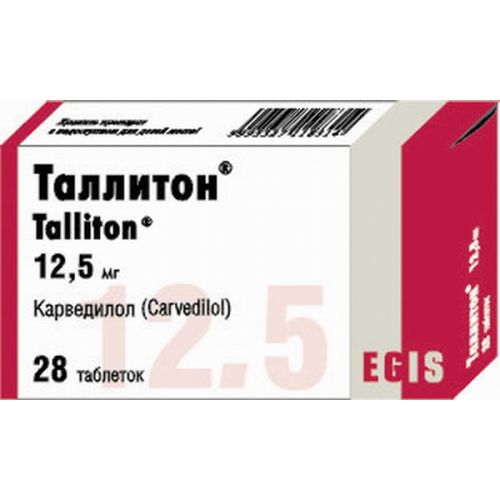
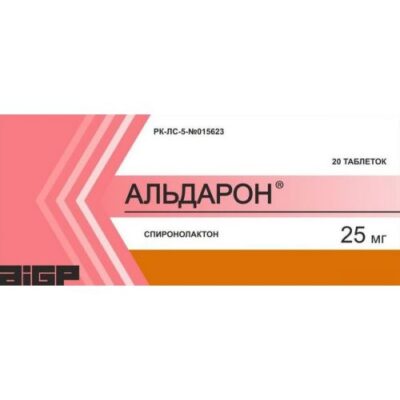
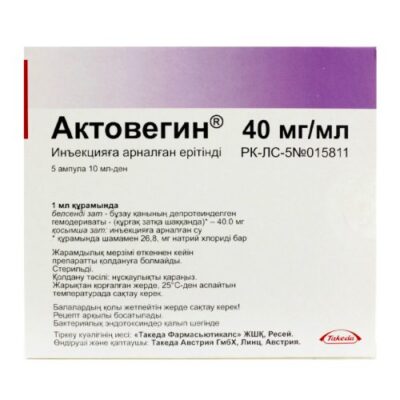
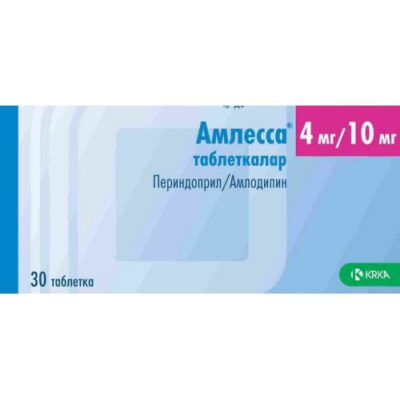
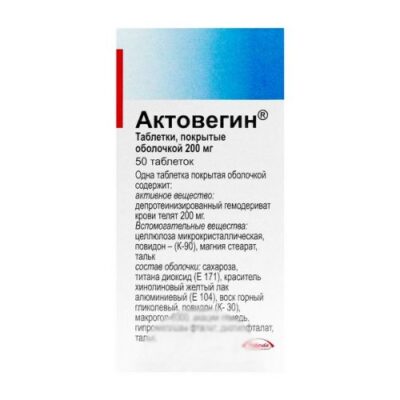
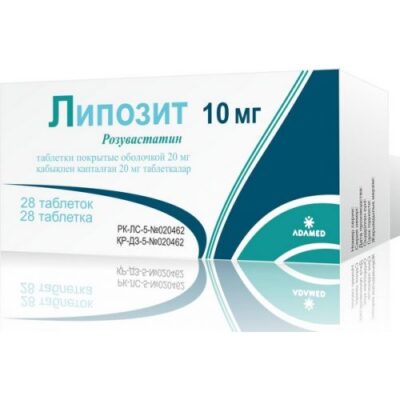
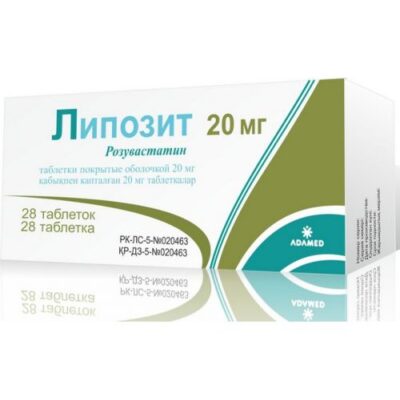
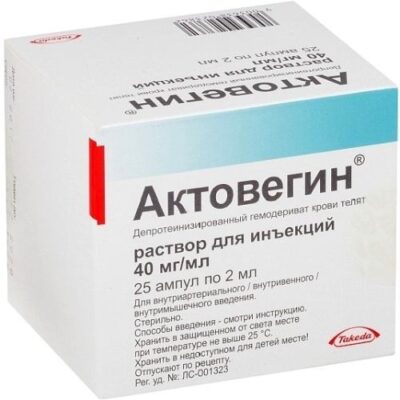
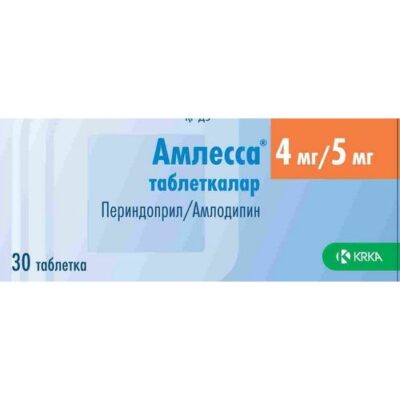
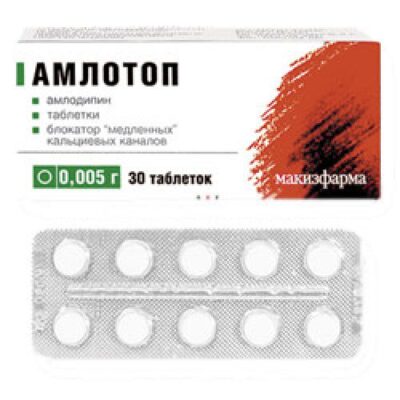
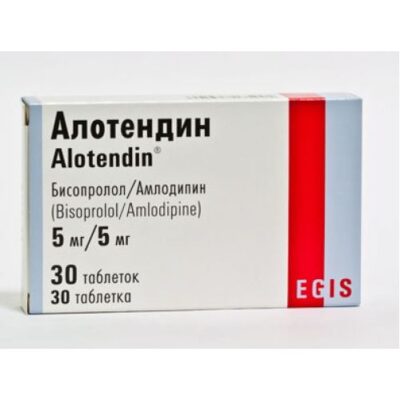






Reviews
There are no reviews yet.